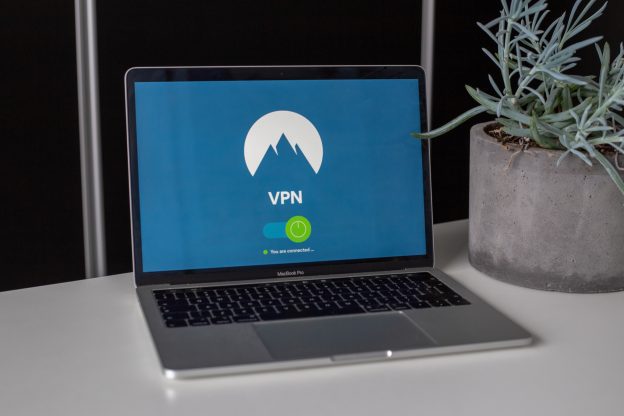What is VPN Split Tunneling?

Now for yet another amazing feature offered by the humble VPN (Virtual Private Network) software that you may never have heard of! In fact, perhaps you are already using a VPN and have never dug into the options and settings. It is important to find out more about split tunneling because you might find it is exactly the feature you are looking for whether you are a regular user or a business user.
Now, there are multiple reasons why you should try out a VPN if you haven’t already. Although hundreds of millions of people use VPNs already, there are still billions of us who have never heard of network security. Likewise, a large portion of the population (that’s 5 billion of us who use the internet) do not care much or are not aware of the risks of using the internet and its platforms. A VPN is almost like a cure-all, a panacea, a single medicine that can alleviate most of the risks and symptoms of the extremely risky, dangerous, and largely unregulated/unmonitored internet space.
Modern-day VPNs come with a plethora of bits and bobs, like advanced kill switch features, dark web monitoring, suspicious activity blockage, and even features such as device meshing, and the all-important split tunneling feature. Split tunneling is relatively new to the VPN provider world and has since become quite popular for several reasons which we’ll cover below. Before we get into the nitty gritty surrounding split tunneling, we need to grasp what a VPN is first to understand why you or your business might benefit from the split tunneling ability of some VPNs.
What is a VPN?
VPNs (Virtual Private Networks) have become a widely used piece of network security software that can be installed on anything that runs an operating system (Windows, macOS, iOS, Android, Linux). Looking at network security in-depth, it is all about the source and end of the signal. If you protect this pathway fully, your network security is good. If your router is adequately secured with WPA3 and a tough password (which it should be already) then you have to worry about the software/device end of things. This is where a VPN would come in. It modifies and encrypts your entire internet traffic so that it cannot be sniffed, intercepted, or sabotaged by external forces.
Furthermore, a VPN can anonymize you by placing your device’s traceable unique IP address in a city/country of your choosing. For instance, when you look up your device’s IP address on any WHOIS lookup or ‘what is my IP’ lookup online, you will find that a premium VPN service will trick the internet into thinking you are somewhere else. On top of that, you will be encrypted behind 256-bits of randomization, meaning that nobody can ‘peek’ into your connection or plaster you with profiling/ads.
Read Also: How to Log in to IFHRMS Pay Slip Login Page
What is Split Tunneling?
Now we come to the question at hand. What exactly is split tunneling and why would you want to use such a feature at all? Let’s start with the basics first. Split tunneling, simply put, is when your VPN software allows you to ‘split’ off a part of your connection for certain applications that you don’t need a VPN to cover. These can sometimes be hardware devices that require a direct connection from your home WiFi but won’t function well with a VPN transmission. With the split tunneling activated in settings, your VPN provider splits your connection for you and asks you which applications you would like to send a raw internet signal to. Secondly, most premium VPNs will let you not only split tunnel your connection for applications but websites and networks too.
Here’s an example of where one might need a split tunnel. Let’s say you have a website that does not allow inputs if you are using a VPN. The website can detect the VPN and you will not have access unless you switch it off. Most people do not like to switch their VPN service off for such quick tasks. Therefore, if you use a spit tunnel you can bypass that. Furthermore, you might not be able to access certain travel sites or even your printer. Some other services might behave in an unstable manner once connected via a VPN. This way, you can choose what to split and what not to split.
Let’s be honest, even the best VPN will take a portion of your original internet speed. This may vary between 10-30 percent of your raw internet speed. For applications that require the full force and full bandwidth of your connection, simply split them.
Now, there are several different types of split tunneling as well. There is inverse split tunneling where you ‘whitelist’ your apps and app-specific split tunneling. Furthermore, you have split tunneling for individual URLs too. In general, most premium VPN providers will allow you to customize a lot of split tunneling scenarios to your liking.
As far as safety goes, you need to understand that connecting to the internet is like entering a dark jungle. You never know what might leap out at you, or whether the ground beneath your feet is solid or not. Therefore, in order not to fall into that quicksand, you should decide to tunnel the applications you know are simple processes. You should never split your internet browser, social media, or your cryptocurrency transactions, for instance. This is where you need protection 24/7. You can, however, decide to split for your hardware devices or for certain URLs you use where you never input personal information but need high bandwidth.
Along with a VPN, you should consider having a good antimalware service running on your devices at all times. This is just in case something happens to your split tunnels such as a malware infection or forced entry. This way you ensure that even your split tunnel applications remain safe overall.
Remember, security starts at the source of your internet connection. That is your internet router. If your router does not have sufficient security and a unique enough password, a VPN or any other security software will not help you.


![Fixing the PII [pii_email_5b2bf020001f0bc2e4f3] Error Code](https://techdailymagazines.com/wp-content/uploads/2021/10/Fixing-the-PII-pii_email_5b2bf020001f0bc2e4f3-Error-Code-390x220.jpg)


